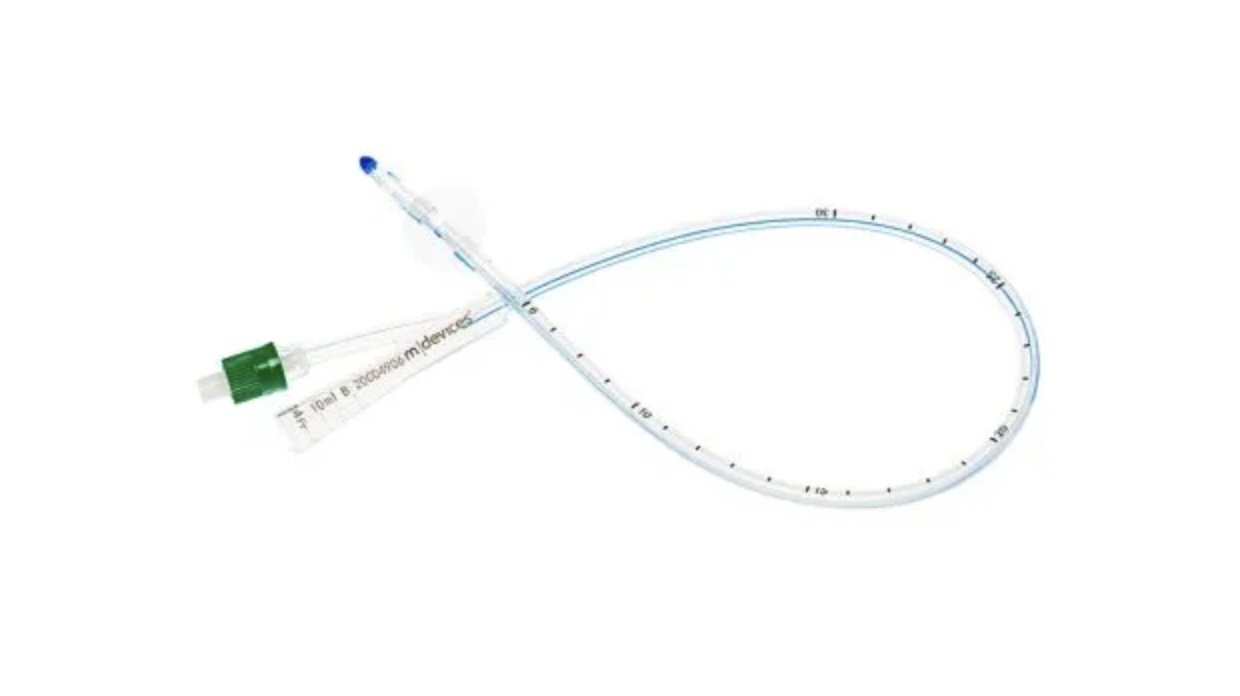Caring for your Urinary Catheter at Home
Today you are going home with a Urinary Indwelling Catheter. You may have had a catheter inserted because your bladder is unable to empty by itself. To understand how the indwelling catheter works, it helps to become familiar with the urinary system.
The urinary system’s main purpose is to remove urinary waste products from the body. Urine is made in the kidneys, moves through the ureters and is stored in the bladder until urine is emptied. The indwelling catheter is a soft flexible tube that is passed through the urethra into the bladder. The catheter is held in place by an inflated balloon on the end of the catheter inside the bladder. The other end of the catheter is joined to an external collection device (called the drainage bag/bottle).
The urine is no longer stored in the body but flows continuously into the collection bag. There are two types of collection bags: a large “overnight” drainage bag and a smaller “leg bag“. The overnight bag is attached when you sleep. The leg bag is used when you are walking, sitting and generally going about your day.
Caring for a catheter
When caring for your catheter, always ensure that you have washed your hands before handling the catheter and drainage bags. You must also wash around the site where the catheter enters the body every day with soap or water. Do not use any talcum powder or ointments around the site of the catheter, and check for any kinks in your tubing. Some other steps that you should take throughout the day include:
- Emptying your urinary drainage bag regularly;
- Strapping the catheter to the upper thigh using a catheter strap. Urinary drainage bags should also be strapped to the leg to maintain comfort;
- At night, attach the overnight urinary drainage bag to the bottom of the leg bag. Ensure the tap between the leg bag and overnight bag is in the open position. Leg straps should be loosened;
- Hang the overnight bag on a hanger, below the level of your bladder. Do not place overnight bag on the floor as this increases the risk of infection; and
- In the morning make sure you close the tap on the leg bag before disconnecting the overnight bag.
To empty the leg drainage bag:
- Always wash your hands.
- Stand over the toilet and open the valve at the bottom of the leg bag.
- Take care not to touch the edge of the toilet with the bag or valve.
- Close the valve when the bag is empty.
- Wash your hands when finished.
To remove the overnight drainage bag in the morning:
- Always wash your hands.
- Close the valve at the bottom of the leg bag.
- Disconnect the overnight bag from the leg bag.
- Readjust the leg straps on your leg bag.
- Empty your overnight bag and throw it in the bin.
- Wash your hands when finished.
What if I have a Catheter Valve?
Some people will have a catheter valve instead of a urinary drainage bag. To care for the valve, the valve must be:
- Released every 3 - 4 hours to empty the bladder unless it’s uncomfortable, then release as needed.
- Emptied before going to bed, overnight as required and first thing in the morning.
- Sometimes the valve is attached to an overnight bag or bottle at night when you sleep. Your Community Nurse will advise you about this.
If you have a Suprapubic Pubic Catheter: Rotate the catheter 360 degrees every day while in the shower, to prevent an encrustation forming around the catheter.
Tips for living with a Catheter
- Ensure that you change the overnight drainage bag each night, as these bags can only be used once;
- Leg bags may be changed once a week and must remain attached to the end of your catheter at all times;
- Drink two litres of fluid each day unless instructed otherwise by your doctor. This will help prevent infection and catheter blockage;
- Avoid constipation as this can prevent the catheter from draining properly;
- Drink two glasses of water before your catheter is changed. Your catheter is changed when clinically indicated by your nurse.
- If there has been no urine draining for more than 4 hours, check that the tubing is not kinked. Try drinking water or walking to dislodge any blockage that may have occurred. If this doesn't work, contact your local doctor, community nurse or local Emergency Department.
Let your local doctor, community nurse or local Emergency Department know if you experience:
- No urine output for more than 4 hours.
- Cloudy or strong smelling urine.
- Blood stained urine.
- Lower abdominal pain or tenderness moving towards the lower back region.
- Chills or fever.
- Urine leaking from around the catheter.
- The catheter comes out.
Where can I get the products to care for my Catheter?
Superior Health Care has a wide range of urinary products that can assist you in caring for your urinary catheter. Many of these products are covered under the NDIS. These products can be found on our online store and include:
Superior Health Care is a registered NDIS provider, and can assist in coordinating the supply of these urinary products. To find out more, call 1800 87 87 22 or email ndis@superiorhealthcare.com.au. Alternatively, leave your contact details on the enquiry form on our site.





